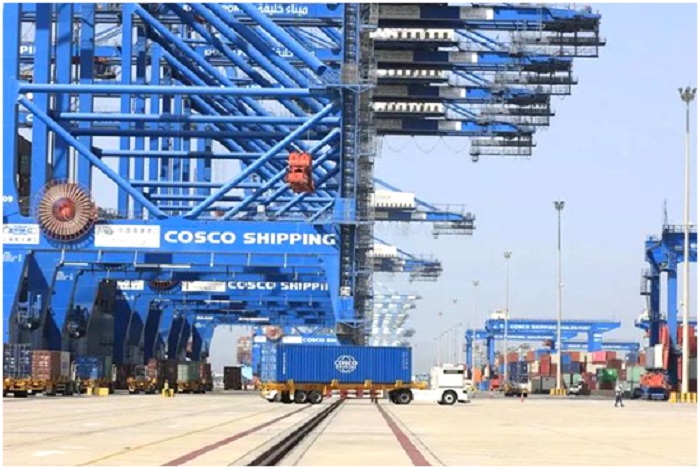



Hubei Kofon intelligent transmission equipment Co., Ltd., an innovative small and medium-sized enterprise (SME) specializing in the research and development (R&D) as well as production of reduction gear, provides more than 85 percent of the reduction gears in pipe jacking machines used in the construction of underground pipe galleries and over 80 percent of the speed reducers in the railings for electronic toll collection (ETC) at expressway toll stations in China.
“We developed and produced the first home-made small planetary gear reducer and the first home-made shield machine speed reducer. Each of these “firsts” represented our success in breaking the long-term monopolies of some developed countries,” said Wu Junfeng, chairman of the company.
The company invests 15 percent of its annual sales revenue in R&D, and 80 percent of its annual profit on technological upgrading, Wu disclosed.
The company has managed to bring the precision of its reduction gears to the international advanced level and achieve mass production of relevant products, according to Wu, who noted that all of the raw materials and components used by the company are produced in China.
Hubei Kofon intelligent transmission equipment Co., Ltd. is a typical example of China’s SMEs that feature specialization, refinement, uniqueness and innovation. They have huge potential and make great efforts to make breakthroughs in key fields and help shore up the country’s weak links.
China’s recent annual Central Economic Work Conference held in December 2021 stressed the necessity to enhance the core competitiveness of the manufacturing industry and launch a batch of projects for upgrading foundational industrial infrastructure to stimulate the emergence of a large number of SMEs with specialized, sophisticated techniques and unique, novel products.
So far, China has incubated over 40,000 such SMEs, including 4,762 “little giant” enterprises, according to Xu Xiaolan, vice minister of industry and information technology.
Each “little giant” company, which refers to a small firm in its early stage of development and focusing on high-end technologies, owns more than 50 valid patents on average; over 60 percent of such companies are engaged in basic industrial fields, over 70 percent have been deeply involved in niche markets for more than 10 years, and over 80 percent are ranked first in the niche markets in the provinces they are headquartered in; and over 97 percent of these “little giant” companies’ revenue comes from their primary businesses, Xu noted.
She believes that SMEs featuring specialization, refinement, uniqueness and innovation serve as a perfect role model of SMEs’ innovation-oriented transformation and become an important force in China’s efforts to develop into a manufacturing powerhouse.
These outstanding SMEs have attached great importance to innovation and made continuous efforts to pursue innovation, becoming a vibrant force for enhancing and improving industrial chains.
“‘Little giant’ enterprises boast strong innovation capability. The proportion of R&D personnel in the staff of these companies can reach 25 percent and the average R&D intensity of these companies exceeds 7 percent,” said Liang Zhifeng, head of the SME Bureau of the Ministry of Industry and Information Technology (MIIT), adding that over half of them spend over 10 million yuan ($1.58 million) a year on R&D.
As a new round of technological revolution and industrial transformation gather pace, these SMEs will certainly show even more vitality in innovation, Liang noted.
At the phase-II wharf of Khalifa Port, Abu Dhabi, the United Arab Emirates, white unmanned container trucks independently developed by Westwell, a “little giant” enterprise in China that is engaged in artificial intelligence (AI) technology, are busy accomplishing assignments. They can not only hoist and transport containers according to the optimal route, but also automatically calculate the transportation cost.
Besides the Middle East, the company’s unmanned container truck fleet has also worked safely in terminals of Laem Chabang Port, Thailand, for 18 months, transporting a cumulative total of over 66,500 twenty-foot equivalent units (TEUs) of containers.
“Since we established an unmanned driving team in 2016, we have intensified efforts to explore port scenarios and successfully expanded our business in overseas markets with our self-developed underlying AI algorithms and chips,” said Tan Limin, chief executive officer (CEO) of Westwell.
By strengthening competitive advantages in niche markets and making breakthroughs in core technologies, outstanding SMEs in China have gained stronger growth resilience.
It becomes a clear development path for SMEs to grow bigger, stronger and more competitive—developing into SMEs with specialized, sophisticated techniques and unique, novel products by improving technological innovation capabilities, professional level and market competitiveness and then single-product champion enterprises by continuously focusing on leading innovations, improving the quality of products and cultivating brands in niche markets and consolidating their position in the global market, said Shan Lipo, deputy director of China International Cooperation Association of SMEs.
From January to September in 2021, “little giant” enterprises in China saw their business revenue and total profits grow by 31.6 percent and 67.9 percent year on year, respectively, 8.8 and 35.4 percentage points higher than the corresponding growth rates of SMEs above designated size in China, according to a survey conducted by the MIIT on over 1,000 “little giant” enterprises.
Many SMEs consider specialization, refinement, uniqueness and innovation an important orientation in their transformation and development.


The Executive and members of the.


The Acting Director, FCT Directorate of.


President Bola Ahmed Tinubu has been.



Barely a month after resignation of.


An Abuja based Legal Practitioner, Osuagwu.



Convener of Equitable Remedy, Mrs. Magaret.


Contractors handling the contract for city.


Nigerian government may have concluded plans.


The Diplomatic Correspondents Association of Nigeria.


A rights group, “Follow Me Talk.
Leave a Comment